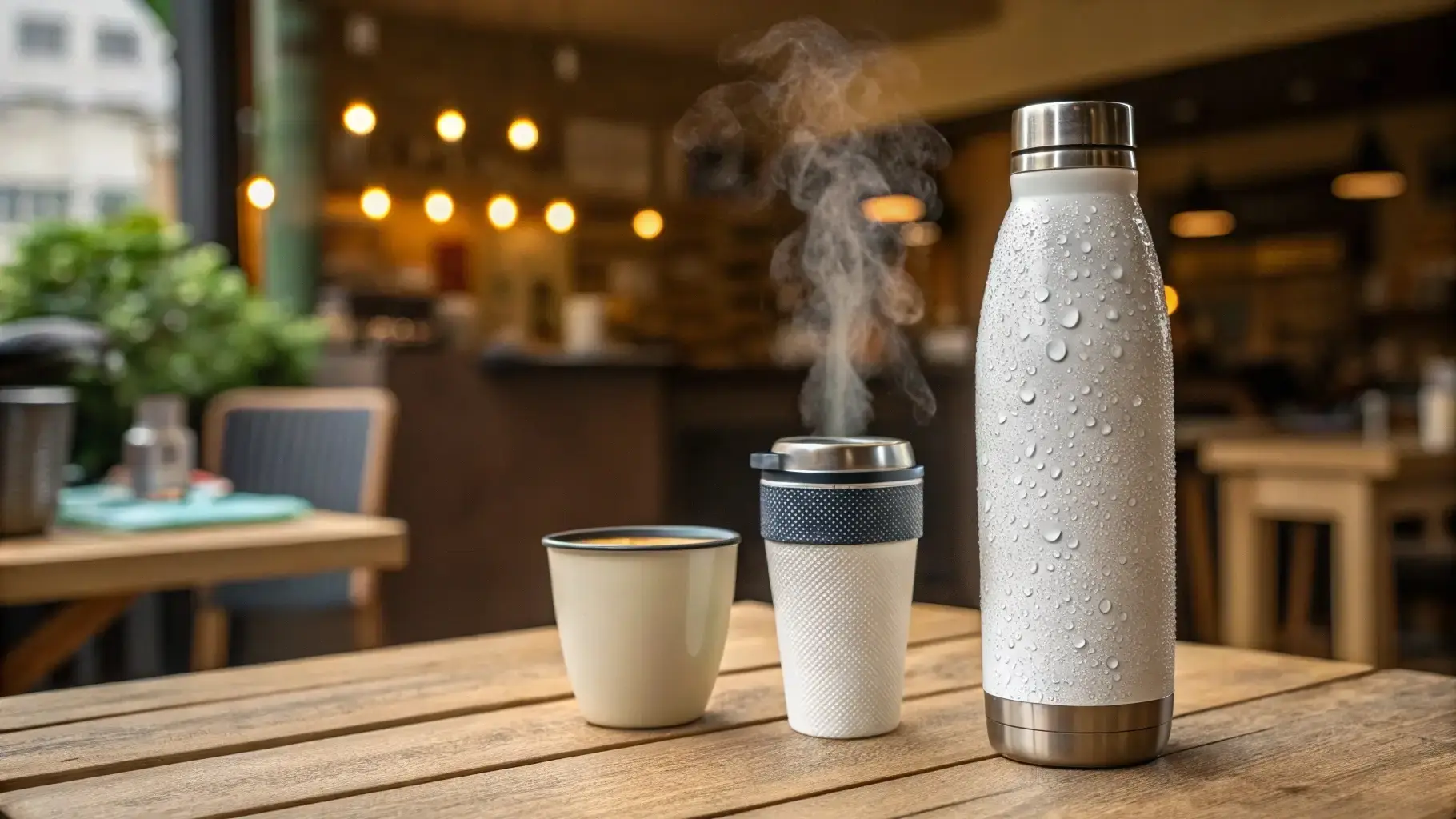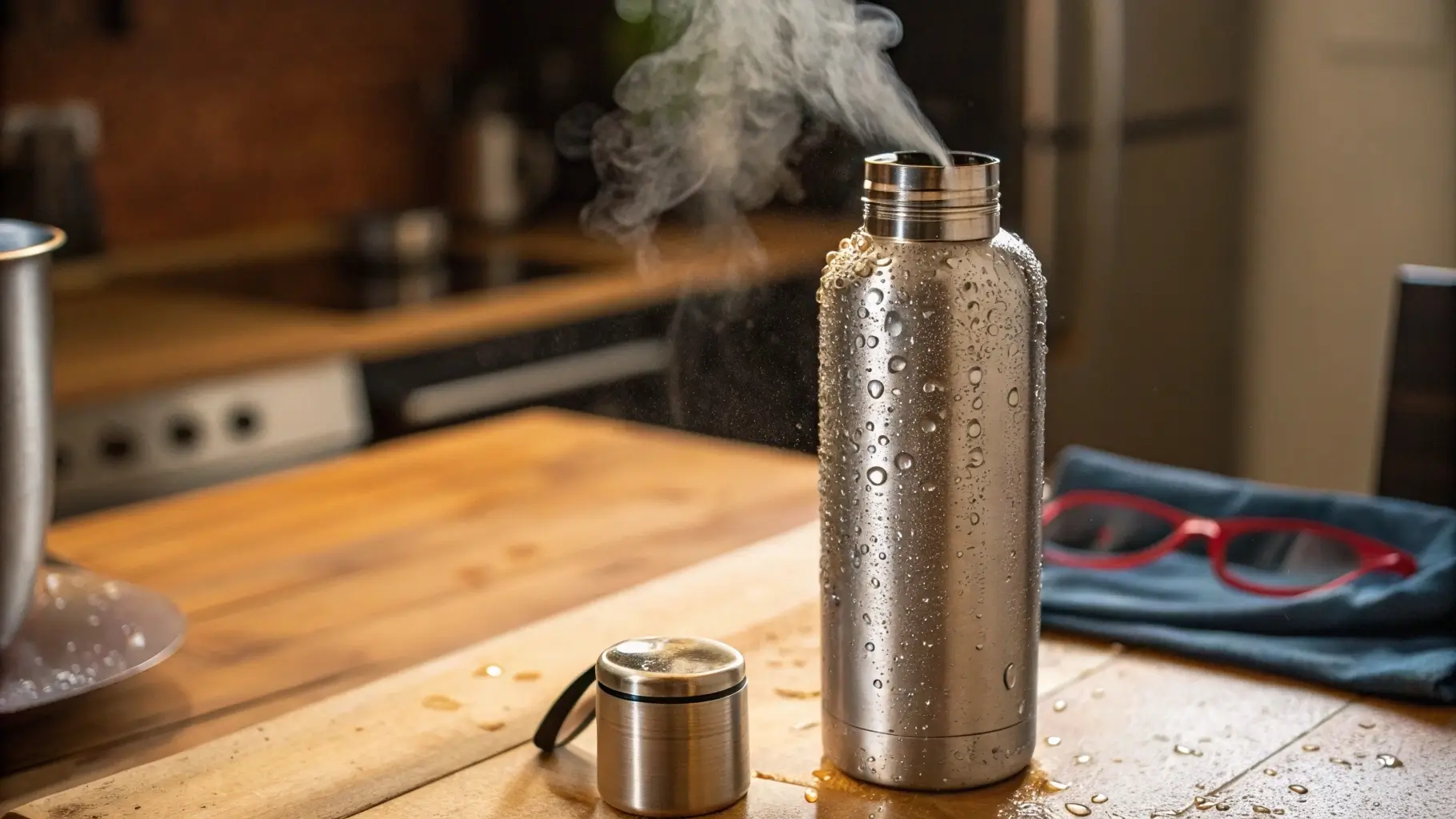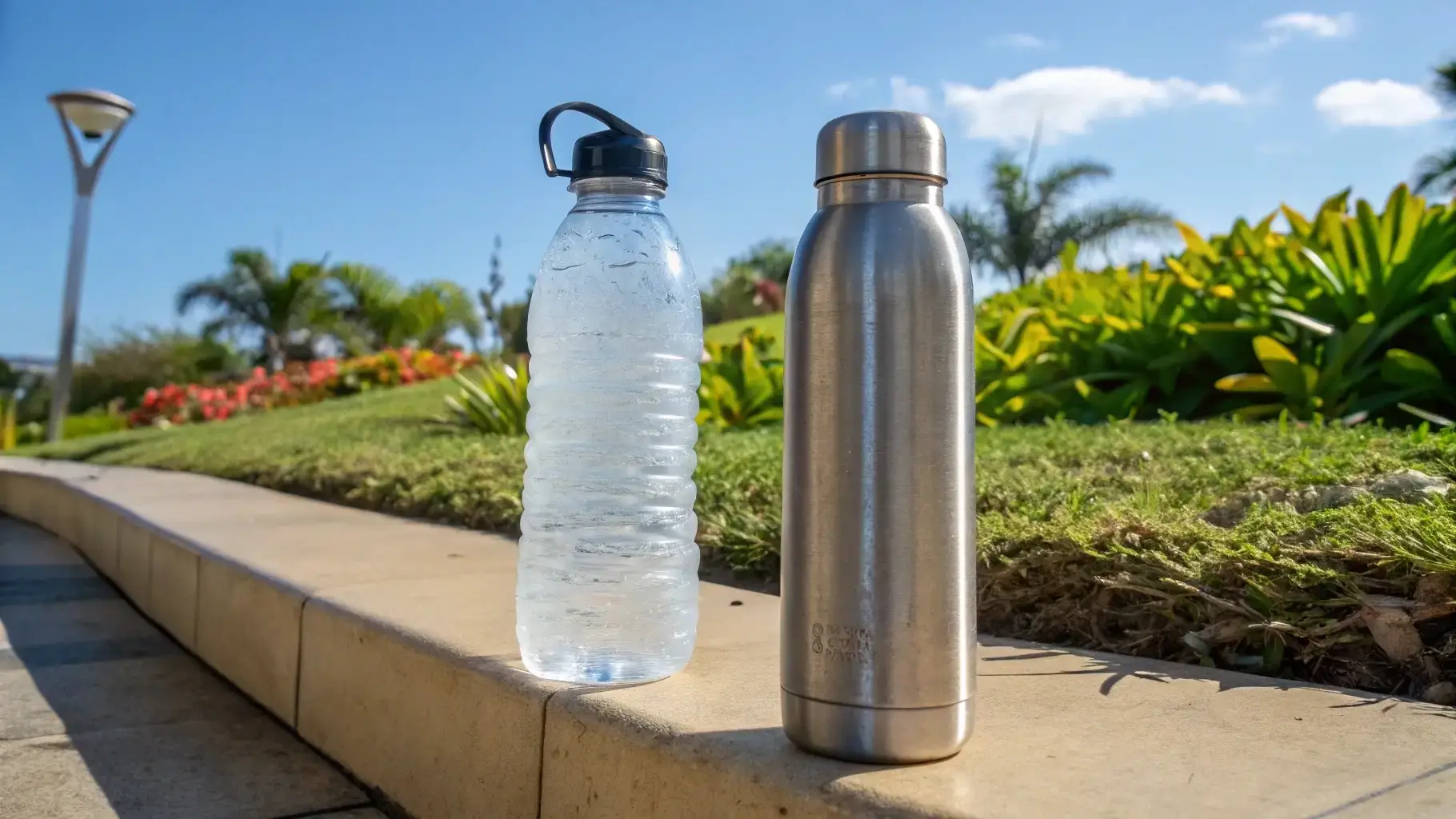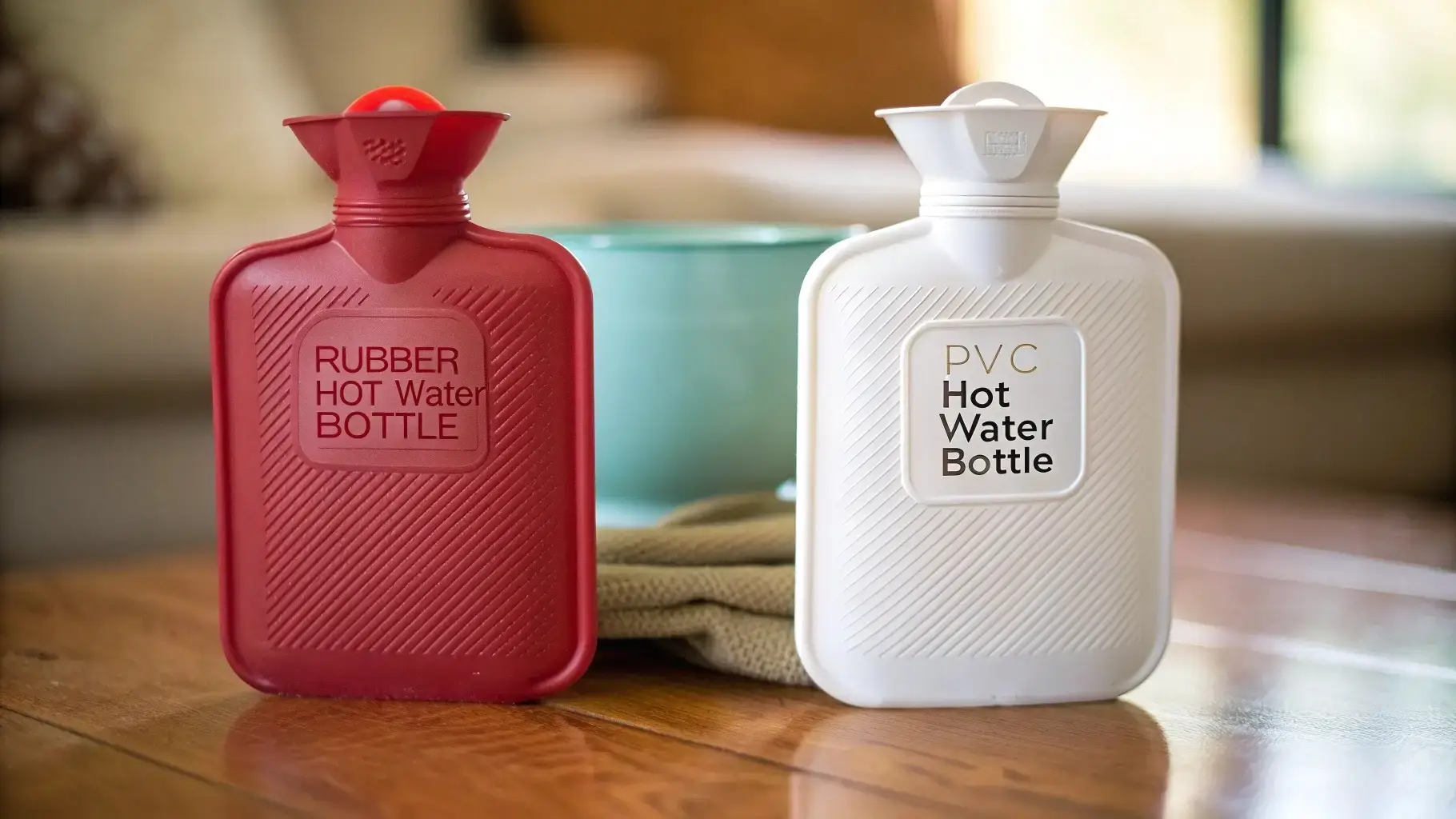
In hot weather, staying hydrated is essential, but the type of water bottle you choose can make a big difference. Some materials can better handle the heat, keeping your drink cooler for longer or ensuring your bottle doesn't release harmful substances.
The best water bottle for hot weather should be made from heat-resistant materials like stainless steel. It should also keep your drink cool and safe to drink.
Let’s explore the best water bottle options for hot weather and why they work better than others.
Which bottle is safe for hot water?
When it comes to hot water, not all bottles are created equal. Some materials can leach harmful chemicals when exposed to heat, while others are designed to withstand higher temperatures without compromising safety.
Glass, stainless steel, and certain plastics are safe for hot water, while many cheap plastic bottles can release toxins when exposed to heat.

Best Bottles for Hot Water: A Closer Look
Stainless steel water bottles1 are among the safest and most durable options for holding hot water. Stainless steel is a non-reactive material, which means it won’t leach harmful chemicals or affect the taste of your water. In addition, it is resistant to high temperatures, ensuring that it can safely hold boiling or near-boiling water without warping or releasing toxins.
Glass bottles are another safe choice for hot water. Like stainless steel, glass is non-reactive, and it doesn’t release harmful substances when exposed to heat. However, glass is fragile and may not be practical for outdoor use.
On the other hand, many plastics, especially low-quality ones, can release harmful chemicals like BPA when exposed to heat. Avoid plastic bottles that are not labeled as BPA-free or heat-resistant.
| Material | Best For | Safety with Hot Water |
|---|---|---|
| Stainless Steel | Durability, insulation | Safe, doesn't leach chemicals |
| Glass | Pure taste, non-reactive | Safe, but fragile |
| Plastic (BPA-free) | Lightweight, budget-friendly | Safe if heat-resistant |
Is it better to drink from stainless steel or plastic?
When it comes to hot weather, choosing between stainless steel and plastic is not just about cost but about safety and effectiveness.
Stainless steel bottles are much better than plastic for holding hot water. They are more durable, do not leach chemicals, and keep your drinks cooler for longer.

Stainless Steel vs. Plastic: Which is Better for Hot Water?
Stainless steel is the clear winner when it comes to hot water bottles2. It is far more durable, ensuring that it will last for years without showing signs of wear and tear. Stainless steel bottles also maintain the temperature of the liquid inside, keeping hot water warmer for longer periods.
Plastic bottles, even BPA-free ones, are not ideal for hot water. Although they may not leach BPA, other chemicals could be released when exposed to high temperatures, affecting the taste and safety of your water. Plastic can also degrade over time when repeatedly exposed to heat, leading to cracks or warping.
Additionally, plastic bottles do not have the same insulating properties as stainless steel. This means that hot liquids in plastic bottles tend to cool down more quickly, which is not ideal for keeping your beverage at the desired temperature in hot weather.
| Material | Pros | Cons |
|---|---|---|
| Stainless Steel | Durable, temperature-insulated | Heavier than plastic |
| Plastic (BPA-free) | Lightweight, affordable | May degrade over time, chemical leaching |
Is rubber or PVC better for a hot water bottle?
Rubber and PVC are often used in hot water bottles, but they are not the ideal choice for hydration. Let’s compare these materials.
Rubber and PVC can handle heat, but they are not the best materials for water bottles, especially for drinking purposes.

Rubber vs. PVC: Which is Better for a Hot Water Bottle?
Both rubber and PVC (Polyvinyl Chloride) are commonly used for traditional hot water bottles, especially in terms of providing heat compression or comfort. However, these materials are designed more for short-term use or external heat applications, not for holding hot water meant for drinking.
Rubber hot water bottles can stretch and are flexible, but over time they can degrade and leak, especially when exposed to extreme heat. PVC, while more rigid, can become brittle and prone to cracking under high temperatures. Additionally, both materials can release toxic chemicals over time, which makes them less suitable for holding liquids that you consume.
For hydration in hot weather, it’s much better to use heat-resistant materials like stainless steel or glass, as they do not release harmful substances and will keep your liquids safe for consumption.
| Material | Pros | Cons |
|---|---|---|
| Rubber | Flexible, long-lasting | Degrades over time, prone to leaks |
| PVC | Rigid, affordable | Prone to cracking, releases toxins |
| Stainless Steel | Durable, safe for consumption | Heavier than rubber or PVC |
What material is best for a hot water bottle?
Choosing the best material for a hot water bottle depends on your primary need—whether you're looking to keep your drink warm for longer or if you're using it for hot water storage in general.
Stainless steel is the best choice for keeping liquids safe and hot for longer periods in hot weather.

The Best Materials for Hot Water Bottles
Among the many options, stainless steel stands out as the top material for water bottles. It not only keeps your water at the right temperature but also ensures that it remains safe to drink. Stainless steel is resistant to corrosion, doesn’t react with liquids, and is extremely durable. Whether you're using it for hot or cold beverages, stainless steel is the most reliable material.
For those who prefer a lighter option, BPA-free plastic3 is another choice, but it should only be used for lukewarm water, not boiling water. Glass bottles, while safe, can be impractical due to their fragility.
If you're considering using a bottle for hot water storage, make sure it’s specifically designed for high temperatures. Many stainless steel bottles offer thermal insulation, meaning your water will stay hot for hours—ideal for long days in the sun.
| Material | Best Use | Features and Benefits |
|---|---|---|
| Stainless Steel | Hot beverages, long-term use | Insulation, durability, non-reactive |
| BPA-free Plastic | Light use, affordable | Lightweight, may degrade under heat |
| Glass | Pure taste, non-reactive | Safe for hot water, but fragile |
Conclusion
For hot weather, the best type of water bottle is made of stainless steel. It keeps your water safe, insulated, and at the right temperature for longer periods, making it the ideal choice for hydration in the heat.
-
Explore the advantages of stainless steel bottles, including durability and safety for hot beverages, to make an informed choice. ↩
-
Discover the best materials for hot water bottles to ensure safety and effectiveness in hydration. ↩
-
Learn about the safety of BPA-free plastic for hot liquids and its limitations compared to stainless steel. ↩

